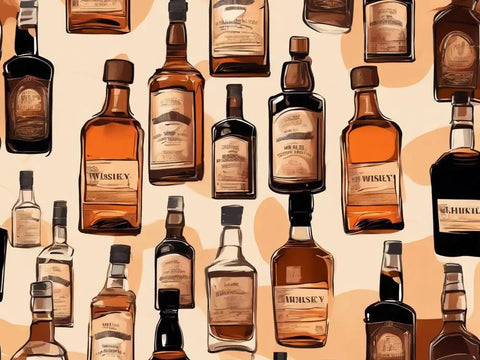Stay informed, drink better, and protect your palate.
Counterfeit alcohol isn’t just a problem for collectors of rare spirits — it’s a global issue that affects everyone from casual drinkers to sommeliers and venue owners. From falsified labels to adulterated contents, fake alcohol has become increasingly sophisticated, making it essential for savvy consumers to know what to look for. Here’s how to spot a fake bottle before it ends up on your shelf — or worse, in your glass.
1. The Price Is Too Good to Be True
This might seem obvious, but it remains the first red flag. If a rare Italian amaro or aged Scotch is offered at a significantly lower price than usual, especially from an unknown vendor, alarm bells should ring. Genuine spirits — particularly those produced by independent, small-batch distilleries — have a value linked to quality, time and sourcing. Counterfeiters rely on your instinct to “snag a bargain”; resist it.
Tip: Cross-check prices on verified online platforms or with known importers (like us at VP Merchants) before you buy.
2. Suspicious Packaging Details
Look closely at the bottle, label, and closure. Counterfeiters often miss the finer points that genuine producers take great care over.
What to check:
-
Misspellings: Typos on the label or back description.
-
Poor quality printing: Blurry fonts, faded colours or inconsistent alignment.
-
Incorrect bottle shape or embossing: Some brands have distinct bottle moulds or embossing under the base or neck. If missing, be wary.
-
Unusual closures: Loose corks, crooked caps or generic foil seals can indicate tampering.
Pro tip: Familiarise yourself with the standard design of bottles you regularly purchase. Even something subtle like the thickness of the glass or label texture can be revealing.
3. No Serial Number or Barcode Discrepancy
Legitimate producers often include a batch number, serial code, or QR code for traceability. Many newer producers in Europe have begun adopting blockchain-linked codes to prove provenance — particularly for limited editions.
If the code is smudged, absent, or doesn’t scan properly (using apps like Vivino or smartphone barcode readers), treat that as a warning.
4. The Liquid Itself Looks Off
Sometimes, the clearest signs are inside the bottle.
-
Sediment in clear spirits: Gin, vodka, or white rum should be crystal clear. Cloudiness or flakes may suggest contamination.
-
Uneven colouring: If the spirit appears too pale or overly dark, particularly for aged products, it may have been diluted or artificially coloured.
-
Floating particles: Small solids in wine or vermouth aren’t always a problem (natural sediment can occur), but combined with other warning signs, it’s worth investigating.
When in doubt, pour a small amount into a clear glass and inspect under bright light.
5. The Aroma Test
This is where your experience as an enthusiast comes into play. Authentic wines and spirits have nuanced, layered aromas. Fakes are often harsh, overly alcoholic, or oddly sweet due to synthetic additives.
-
Fake whisky may smell like solvent or burnt rubber.
-
Counterfeit gin might lack botanical character, with a flat or perfumed note.
-
Adulterated vermouth or liqueurs may smell medicinal or sour.
Never taste if you’re unsure. If it smells wrong, it probably is.
6. Verify the Seller
Always buy from reputable, traceable sources — whether online or in person. Licensed retailers, trusted wine merchants, and hospitality venues with a good reputation are your safest bet. Be especially cautious when buying from third-party sellers on auction sites, social media, or unverified marketplaces.
Look for:
-
A clear returns policy
-
Authentic brand partnerships
-
Company registration information
-
Physical business address
At VP Merchants, we import directly from producers across Italy, Ireland, and beyond — with transparent sourcing and proper documentation — so you always know exactly what’s in your bottle.
7. The Weight of the Bottle
Authentic spirit bottles are often heavier due to thicker glass and premium presentation. Counterfeiters may cut costs using lighter or recycled glass. If a bottle feels oddly light for its size, compare it with a known authentic one if possible.
8. Consult the Producer (or Importer)
If you have doubts, reach out directly to the producer or their official distributor. Many brands are happy to confirm authenticity based on photos, batch numbers, or purchase details. For smaller, artisanal brands, this might even connect you with the passionate makers themselves — a rewarding experience for any enthusiast.
Final Thoughts
The world of fine wine and spirits is one of craftsmanship, heritage, and trust. Fake bottles compromise not just taste, but safety and integrity. As producers innovate with security features — and trusted retailers uphold high standards — it’s never been more important for consumers to stay informed.
If you ever need guidance, or want to ensure you're sourcing genuine products, feel free to get in touch with us. At VP Merchants, we’re proud to support independent producers and safeguard authenticity — one bottle at a time.


